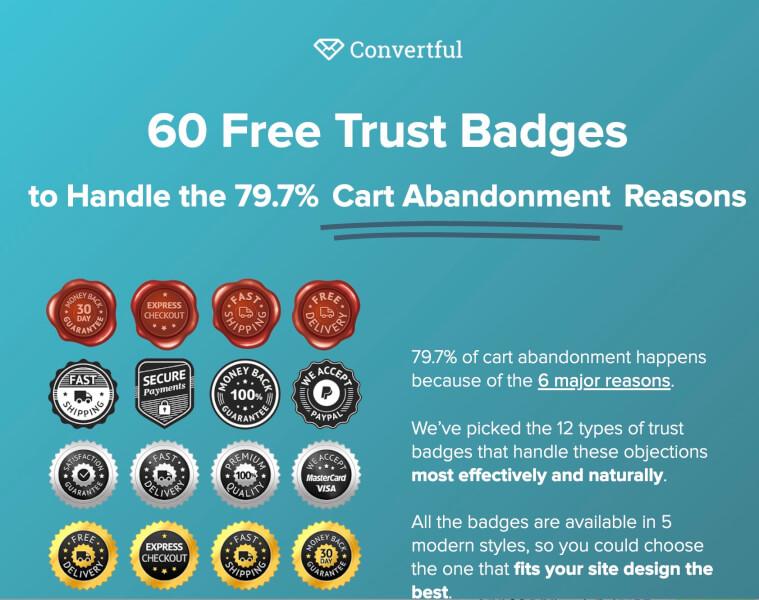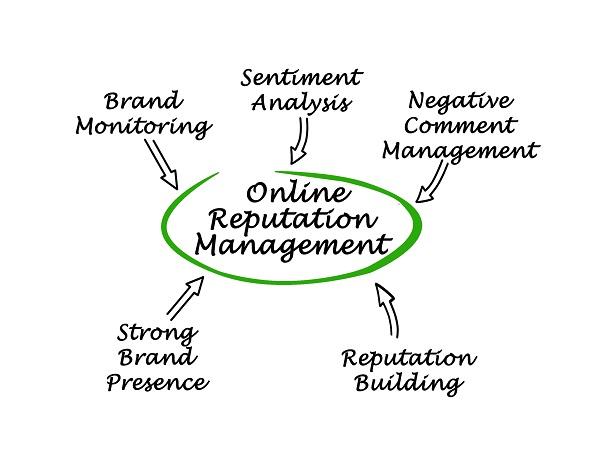In the bustling world of e-commerce, where countless stores compete for the attention of savvy shoppers, establishing trust can feel like an uphill battle—especially for new businesses. Imagine walking into a shop for the first time; you’d want to feel welcomed, informed, and confident about making a purchase.The same principle applies online, and that’s where trust-building content comes into play. But what exactly does that mean for your e-commerce store? How can you craft content that not only attracts customers but also makes them feel secure in their decision to buy from you? In this article, we’ll explore the essential strategies for creating compelling trust-building content that resonates with your audience, enhances your brand credibility, and ultimately drives sales. So, grab a cup of coffee and let’s dive into the art of turning hesitant browsers into loyal customers!
Creating Authentic Brand Stories That Resonate With Your Audience
In the crowded e-commerce landscape, your brand story is what sets you apart from competitors. Authenticity is key; customers are drawn to brands that reflect genuine values and narratives. Start by identifying the core values of your brand and how they align with the needs and aspirations of your target audience.when customers can relate to your story, they’re more likely to build a connection, fostering trust and loyalty.
To create a compelling narrative, consider sharing the journey of how your business was founded. Highlight the challenges faced and the milestones achieved. This not only makes your brand relatable but also creates a sense of community around shared experiences. Use visual storytelling—images and videos can enhance your message and make it more impactful. A well-crafted video can convey emotions that words alone may not capture.
Incorporate customer testimonials and success stories into your narrative. When previous customers share their positive experiences, it serves as social proof, strengthening your credibility. Make sure these testimonials are visible on your site, perhaps in a dedicated section or as part of product pages. Presenting real-life examples of how your products have made a difference can substantially influence potential buyers’ decisions.
Consider engaging your audience through content that invites participation. ask them to share their experiences with your products on social media or through your website. Showcasing user-generated content not only enriches your brand story but also builds a sense of trust. When potential customers see real people enjoying your products, it reinforces the idea that your brand delivers on its promises.
| Brand Story Element | Purpose |
|---|---|
| founding Story | Establishes authenticity |
| Customer Testimonials | Builds social proof |
| User-Generated Content | Enhances community engagement |
| Visuals and Videos | Creates emotional connection |
ensure that your brand’s voice is consistent across all channels. Whether it’s through your website, social media, or email marketing, maintaining a cohesive narrative helps reinforce your brand identity. Authenticity and clarity will always resonate; when your audience feels seen and understood, they are much more likely to place their trust in you.
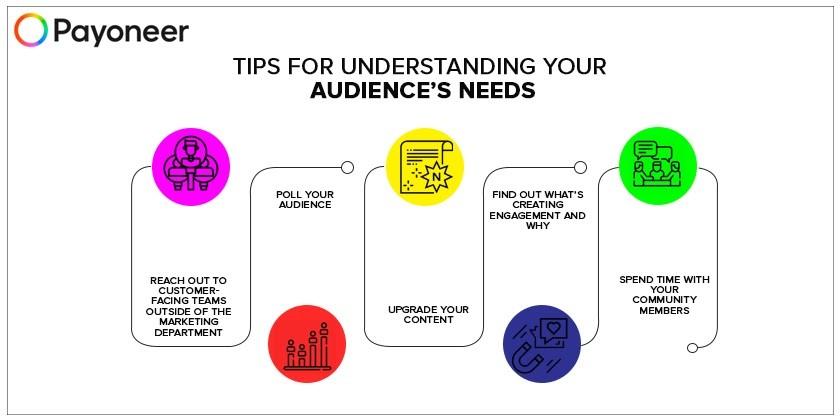
Understanding Your Audiences Needs and Pain Points
To effectively engage your audience, it’s crucial to dive deep into their needs and pain points. this understanding acts as a compass, guiding your content creation process.Begin by gathering insights about your target demographic through various channels. Consider using:
- Surveys and Questionnaires: Directly ask potential customers what they need and what challenges they face.
- Social Media Listening: Monitor platforms to see what your audience is discussing and what problems they’re highlighting.
- Competitor Analysis: Examine your competitors to identify gaps in their offerings that your audience may be longing for.
Next, segment your audience based on their specific pain points. This allows you to tailor your content more precisely.As an example, you might discover that:
| Audience Segment | Pain points |
|---|---|
| Busy Professionals | Lack of time for online shopping |
| Budget-Conscious Shoppers | High prices and lack of discounts |
| Eco-Conscious Consumers | Unsustainable product options |
With this details, you can create targeted content that resonates with different groups. As an example, if your audience includes busy professionals, content highlighting time-saving benefits will be valuable. Conversely, eco-conscious consumers will appreciate content focusing on sustainability practices and ethical sourcing.
Moreover, consider addressing these pain points through various content formats. Here are a few effective options:
- Blog Posts: Write articles that provide solutions, tips, and insights directly related to their issues.
- Video Tutorials: Create engaging videos that demonstrate how your products can solve specific problems.
- Infographics: Visually represent data or processes that simplify complex information for your audience.
By consistently aligning your content with your audienceS needs and pain points, you not only build trust but also establish your brand as a valuable resource. This approach encourages potential customers to engage with your e-commerce store, increasing the chances of conversion.
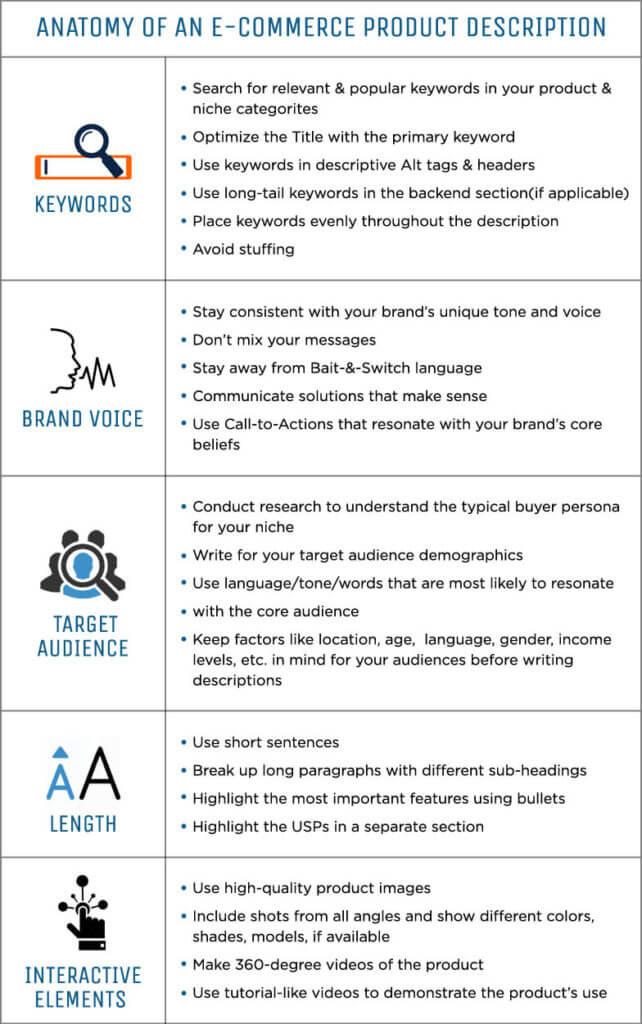
Crafting High-Quality Product Descriptions That Build Confidence
When it comes to e-commerce, your product descriptions are often the first point of interaction between your brand and potential customers. Crafting descriptions that resonate with shoppers can significantly enhance their confidence in your products. A well-written description does more then just inform—it builds trust and encourages conversion. Here are some key strategies to ensure your product descriptions hit the mark.
Focus on Benefits, Not Just Features: While it’s essential to outline what a product does, it’s even more crucial to explain how it improves the customer’s life. Use a conversational tone to connect with your audience.Rather of simply listing features, narrate a scenario where the customer experiences the benefits. Such as:
- Feature: “Made with 100% organic cotton.”
- Benefit: “Enjoy ultimate comfort and breathability, perfect for all-day wear.”
Use Clear and Concise Language: Clarity is key in your descriptions. Avoid jargon and overly technical terms that might confuse potential buyers. Aim for straightforward language that anyone can understand. In addition, bullet points can definitely help break down information into easily digestible bits, making it easier for shoppers to skim through.
Incorporate Social Proof: Leverage customer reviews or testimonials directly within your product descriptions.Highlighting previous buyers’ positive experiences not only validates your claims but also reassures new customers. An effective approach might involve:
- Including a short customer quote.
- Providing a star rating visual.
- Linking to user-generated content, such as photos or videos showcasing the product in real life.
| Customer Feedback | Impact on Confidence |
|---|---|
| “This is the most comfortable shirt I own!” | Increases perceived value |
| “I love how it fits—true to size!” | Reduces return hesitation |
| “Fast delivery and excellent quality!” | Enhances reliability perception |
Utilize high-Quality Imagery: It’s often said that a picture is worth a thousand words. Pair your descriptions with high-resolution images that showcase the product from multiple angles. Consider including lifestyle shots to help customers visualize the product in use. A compelling visual can greatly enhance the effectiveness of your written content.
remember to keep your branding consistent across all product descriptions. This consistency builds recognition and trust over time. Every word should reflect your brand’s voice and values, reinforcing to customers that they are making a sound choice by shopping with you.

Utilizing Customer Reviews to Establish Credibility
One of the most effective ways to build credibility for your new e-commerce store is by leveraging customer reviews. In an age where online shopping is ubiquitous, potential buyers often turn to the experiences of others to inform their purchasing decisions. Here’s how to utilize these testimonials to your advantage:
- Showcase Authenticity: Displaying genuine customer reviews allows visitors to see real experiences from real people.This transparency fosters trust and encourages hesitant shoppers to make a purchase.
- Highlight Key Features: Use reviews to underscore particular product attributes that resonate with buyers. As a notable example, if multiple customers praise the durability of a product, make sure to feature these insights prominently on your product pages.
- Encourage Detailed Feedback: Prompt customers to leave complete reviews. ask specific questions about their experience with the product, such as quality, usability, and delivery time, to generate valuable insights.
Moreover, consider creating a dedicated section on your website to display these reviews. This not only enhances credibility but also encourages more customers to share their thoughts.Here’s a simple format to present customer feedback effectively:
| Customer Name | Review | Rating |
|---|---|---|
| Jane Doe | “Absolutely love this product! It exceeded my expectations.” | ★★★★★ |
| John Smith | “Good value for the price, but delivery took longer than expected.” | ★★★★☆ |
Incorporating reviews not only provides social proof but also enhances your SEO strategy. Search engines favor websites that offer user-generated content, which can further boost your rankings. So, encourage customers to share their experiences on social media and link back to your site, amplifying reach and visibility.
Lastly,don’t shy away from responding to reviews—both positive and negative. Engaging with customers shows that you value their feedback and are committed to improving their experience. This open dialog can turn a one-time buyer into a loyal customer as they feel heard and appreciated.

incorporating Visuals That enhance Trust and Engagement
Visuals play a crucial role in building trust and enhancing engagement on e-commerce platforms. When potential customers land on your site, they are immediately drawn to images and videos that not only capture attention but also convey the credibility of your brand.Here are some strategies to effectively incorporate visuals that can foster trust:
- Use High-Quality Images: Invest in professional photography for your products. crisp, clear images showcase your offerings in the best light and eliminate doubts about quality.
- Include User-Generated Content: Encourage customers to share their own photos using your products. This not only adds authenticity but also creates a sense of community around your brand.
- Implement Video Testimonials: Videos featuring satisfied customers sharing their experiences can significantly enhance trust. A face to the name, combined with real stories, resonates deeply with potential buyers.
- Showcase Behind-the-Scenes Content: Sharing visuals that depict your team, workspace, or production processes can humanize your brand and build stronger connections with customers.
Another effective way to leverage visuals is through infographics and charts. These elements can simplify complex information and present it in an easy-to-understand format. Consider using infographics to illustrate:
| Benefit | Description |
|---|---|
| Improved Understanding | Visuals help convey your message quickly and effectively. |
| Enhanced Retention | information presented visually is more memorable. |
| Increased Shareability | engaging visuals are more likely to be shared on social media. |
ensure that your visuals align with your brand identity. Consistency in style, color palette, and tone across all images and videos reinforces your brand message and fosters a cohesive experience for visitors. Incorporating well-designed infographics, product videos, and vibrant images will not only captivate your audience but also solidify their trust in your brand.
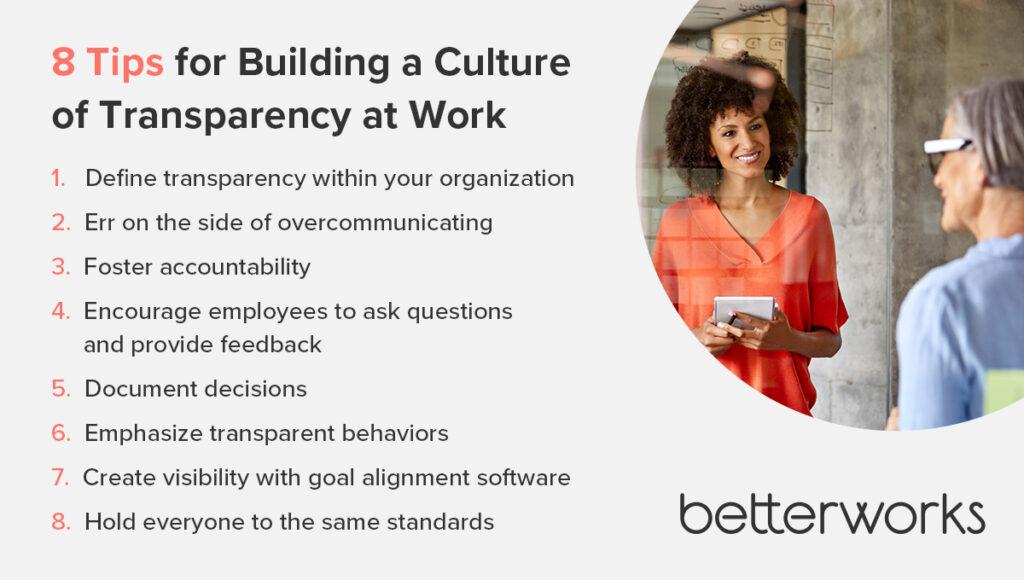
Implementing Transparent Policies for Refunds and Shipping
Transparent policies are essential for building trust with your customers, especially in the e-commerce realm where physical interactions are minimal. Clearly outlining refund and shipping policies not only enhances credibility but can also significantly reduce the number of customer inquiries. Here’s how to ensure your policies are as transparent as glass.
Refund Policies:
- Clarity is Key: Use simple language to explain your refund process. Outline the steps customers need to take if they wish to return an item.
- Timeframes Matter: Specify how long customers have to request a refund.Such as, “You have 30 days from the date of delivery to return your item for a full refund.”
- Conditions for Returns: Clearly state any conditions that must be met for a refund, such as the item being unopened or in its original packaging.
Shipping Policies:
- Shipping Options: Offer a variety of shipping methods and make sure to describe them well. Customers appreciate the choice between standard and expedited shipping.
- Tracking Information: Provide tracking details once an order is shipped. this helps customers feel connected to their purchase and reduces anxiety.
- International Shipping: If you offer international options,be transparent about potential customs fees or shipping times. This can prevent surprises that might lead to dissatisfaction.
consider displaying your refund and shipping policies in a prominent section on your website, such as in the footer or during the checkout process. You might even create a dedicated FAQ page to address common questions.This proactive approach not only informs your customers but also shows that you are confident in your policies.
To further enhance understanding, you can utilize tables to summarize key points. Here’s a simple example:
| Policy aspect | Details |
|---|---|
| Refund Requests | 30 days from delivery |
| Shipping Options | Standard, Expedited, International |
| Tracking | Provided via email |
By implementing these transparent policies and communicating them effectively, you are not just protecting your business; you are actively building a foundation of trust with your customers that leads to repeat business and positive word-of-mouth.
Engaging with Your Audience Through Social Proof
In the world of e-commerce, building trust is paramount, especially for new stores. One of the most effective ways to establish credibility is by leveraging social proof. Social proof showcases the positive experiences of existing customers and influences potential buyers to feel more confident in their purchasing decisions. Here are some strategies to effectively integrate social proof into your content.
- Customer Reviews and Testimonials: Highlighting genuine testimonials can significantly impact a visitor’s perception. Encourage satisfied customers to leave reviews, and consider featuring these prominently on your product pages or a dedicated testimonials section.
- User-Generated Content: Encourage your customers to share photos of your products in use. This not only creates a sense of community but also provides authentic content that resonates with potential buyers.Create a branded hashtag to aggregate this content on social media.
- Case Studies: If applicable, provide detailed case studies that illustrate how your product has solved specific problems for customers. This storytelling approach helps to demonstrate real-life applications of your offerings.
Another impactful strategy is to showcase any endorsements or partnerships with reputable brands or influencers. When potential customers see that trusted figures back your store, their confidence in your brand increases substantially. Make sure to include logos and short descriptions of any affiliations.
| Type of Social Proof | Impact on Customer Trust |
|---|---|
| Customer Reviews | High |
| User-Generated Content | Medium |
| Influencer Endorsements | Very High |
| Case Studies | High |
don’t underestimate the power of metrics. Displaying numbers, such as total sales, customers served, or social media followers, can create a sense of urgency and reliability. Consider adding a live counter that shows how many people are currently browsing or have purchased items from your site. This kind of dynamic social proof can be a game-changer, nudging hesitant visitors to take the plunge.

Building a Robust FAQ Section to Address Common Concerns
Creating a comprehensive FAQ section is essential for addressing the most common concerns of your potential customers. By anticipating their questions and providing clear answers, you not only reduce the friction in their buying journey but also build trust in your brand. Here are some key aspects to consider when developing your FAQ section:
- Identify Common questions: Start by gathering questions from various sources. Look at customer service inquiries, feedback on social media, and search queries related to your products. Understanding the voice of your customer will help you craft relevant FAQs.
- Be Clear and Concise: Each answer should be straightforward and easy to understand.Avoid jargon and complex language. Instead, use simple terms that resonate with your audience.
- Organize Logically: Group similar questions together under headings to make navigation easier. For example, you could categorize your FAQs into sections like “Shipping Information,” “Returns and Exchanges,” and “Product Details.”
Additionally, ensure that your FAQ section is easily accessible from all pages of your website. This can be achieved by including a link in the footer or a prominent button on the homepage. A well-placed FAQ section not only enhances user experience but also instills confidence in new customers.
| Category | Example Question | Purpose |
|---|---|---|
| Shipping | How long will my order take to arrive? | Addresses shipping times, reducing anxiety about delivery. |
| Returns | What is your return policy? | Clarifies return processes, enhancing purchase confidence. |
| Product Info | Are the products eco-friendly? | Appeals to environmentally conscious consumers. |
Regularly updating your FAQ section is also vital.As your business grows and evolves, new questions will inevitably arise. By continuously refining your FAQs, you demonstrate that you value customer feedback and are committed to providing an excellent shopping experience. This proactive approach not only answers consumers’ concerns but also reinforces your brand’s credibility.
Leveraging Expert Content to Position Yourself as an Authority
Establishing yourself as a trusted authority in the competitive world of e-commerce is crucial for attracting and retaining customers. One highly effective strategy is to leverage expert content across various platforms. by curating and sharing insights from industry leaders, you not only provide value to your audience but also position your brand as a credible source of information.
Consider the following methods to harness expert content:
- Interviews and Q&A Sessions: engage with industry experts through interviews or live Q&A sessions. This allows you to extract valuable insights that can be shared with your audience,showing that you are connected to the wider e-commerce community.
- Guest Blogging: Invite experts to contribute guest posts on your blog. Their established reputation will lend credibility to your site and expand your reach to their audience.
- Case Studies and Success Stories: Highlight success stories or case studies from trusted figures in the industry. This not only builds trust but also showcases practical applications of their insights.
Incorporating expert opinions into your content strategy can significantly enhance your brand’s authority. To facilitate this, consider creating a content calendar that emphasizes consistent engagement with experts. This could include a monthly expert roundup, a podcast series, or regular webinars. Each piece of content can be linked back to your products, subtly guiding your audience toward making a purchase.
To visually represent your authority, you might want to create a comparison table that highlights your unique offerings against industry standards. Here’s a simple example:
| Feature | Your Store | Industry Average |
|---|---|---|
| Customer Support | 24/7 Live chat | Business Hours Only |
| Return Policy | 60 Days No Questions Asked | 30 Days Limited |
| Shipping Time | 2-3 Days Standard | 5-7 Days Average |
By presenting such data, you clarify your advantages and reassure potential customers that they are making a sound choice. This approach not only enhances credibility but fosters a sense of trust that can lead to increased conversion rates.

Creating a Seamless User Experience That Instills Trust
Creating a seamless user experience is crucial for establishing trust in your e-commerce store. When visitors feel comfortable navigating your site, they are more likely to convert into paying customers. Here are some essential elements to consider:
- simple Navigation: ensure your menu is straightforward and easy to use. categories should be clearly labeled, allowing customers to find what they’re looking for without frustration.
- Fast Loading Times: Users expect rapid access to information. Optimize your site speed to reduce bounce rates and keep customers engaged.
- Mobile Responsiveness: With an increasing number of shoppers using mobile devices,your site must look and function well on smartphones and tablets.
Visual design also plays a notable role in user trust. A clean, professional look can convey reliability and enhance your brand image. Consider employing the following design principles:
- consistent Branding: Use a cohesive color palette and font style throughout your site to create a unified look.
- High-Quality Images: Showcase your products with clear, high-resolution photos. Customers are more likely to trust a store that displays items transparently.
- Clear Call-to-Action Buttons: Make it easy for users to take the next step, whether it’s adding to cart, signing up for a newsletter, or contacting support.
Moreover, integrating social proof can significantly enhance trust. Consider including:
| Type of Social Proof | Impact |
|---|---|
| Customer Reviews | Showcases satisfaction and builds credibility. |
| Testimonials | Provides personal experiences and endorsements. |
| Trust Badges | reassures customers about security and privacy. |
transparency is key in building long-term trust. Make sure to include:
- Clear Return and Refund Policies: Outline the process in an easy-to-understand manner.
- Contact Information: Provide multiple ways for customers to reach you, reinforcing that you’re available and ready to help.
- Privacy Policy: Clearly state how customer data is used and protected to instill confidence in your practices.
By focusing on these elements, you can create a user-friendly experience that not only enhances your customers’ journey but also fosters trust, encouraging them to return to your e-commerce store time and again.
Frequently Asked Questions (FAQ)
Q&A: How To Create Trust-Building Content for New E-Commerce Stores
Q: Why is trust significant for new e-commerce stores?
A: Trust is the foundation of any successful e-commerce business, especially for newcomers. When potential customers land on your site, they want to feel confident that their personal information is secure and that they’ll receive the products they order. Building trust can lead to higher conversion rates, repeat customers, and positive word-of-mouth.
Q: What types of content can help build trust?
A: There are several types of content that can effectively build trust:
- Customer Reviews and Testimonials: Real feedback from previous customers can be a game-changer. It adds credibility and reassures new visitors that others have had positive experiences with your brand.
- Detailed Product Descriptions: Providing comprehensive product details helps customers feel informed and confident about their purchases. Include information on materials, sizing, and care instructions.
- About Us Page: share your brand story! Customers love to know who they’re buying from. Highlight your mission, values, and what makes your store unique.
- Engaging Blog Posts: Offer valuable content related to your niche. This not only positions you as an expert but also helps create a community around your brand.
- High-Quality Images and Videos: Visual content is crucial. Use high-resolution images and videos to showcase your products from multiple angles. this gives customers a better idea of what they’re getting.
Q: How can I effectively showcase customer reviews?
A: You can display reviews prominently on product pages, create a dedicated testimonials section on your homepage, or even feature customer stories through blog posts or social media. Consider using third-party review platforms like Trustpilot or Yotpo for verified reviews; this adds an extra layer of authenticity.
Q: Is it essential to have a secure website?
A: Absolutely! A secure website (look for HTTPS in your URL) is crucial for protecting customer information. Clearly display security badges or certificates to reassure customers that their data is safe. This small detail can significantly boost their confidence in your store.
Q: How often should I update my content?
A: Regular updates are key! Aim to refresh your product descriptions, add new blog posts, and update testimonials frequently. This shows that your store is active and engaged, which builds trust. Plus, it can help with your SEO efforts, making it easier for potential customers to find you.
Q: Can social media help in building trust?
A: Definitely! Social media platforms are great for engaging with your audience and showcasing your brand’s personality. Share behind-the-scenes content, respond to customer inquiries, and encourage user-generated content. This interaction creates a personal connection that can enhance trust.
Q: What if I’m just starting, and I don’t have any customer reviews yet?
A: It’s common for new stores to start without reviews. Consider offering your products to friends, family, or influencers in exchange for honest feedback.You can also include a “Coming Soon” section for reviews, and encourage customers to leave feedback after their purchases. Over time, these will accumulate and start to build your reputation.
Q: Any last tips for creating trust-building content?
A: Be transparent and authentic in everything you do. Share your challenges, celebrate your successes, and always prioritize customer service. Trust is built over time, so consistency is key. Keep engaging with your audience and refining your content strategy based on their feedback. Remember, when customers trust you, they’re more likely to become loyal advocates for your brand!
Closing Remarks
As we wrap up our journey into the world of trust-building content for your new e-commerce store, remember that forging genuine connections with your audience is the cornerstone of a successful online business. It’s not just about selling products; it’s about creating a community that believes in your brand.
By implementing the strategies we discussed—sharing authentic stories, showcasing customer testimonials, and prioritizing transparency—you’ll not only build trust but also foster loyalty.In a crowded marketplace, trust is your secret weapon. It transforms casual browsers into devoted customers who come back time and time again.
So, take a deep breath and dive in! Start crafting content that resonates with your audience and reflects the values of your brand. The effort you put into building trust today will pay off with a loyal customer base tomorrow. Remember,in the world of e-commerce,authenticity is your greatest ally. Now go out there and make your mark! Happy selling!



